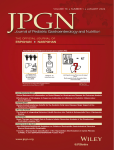Oropharyngeal Dysfunction and Gastroesophageal Dysmotility Are Present in Girls and Women with Rett Syndrome
ABSTRACT
Background:
Feeding impairment frequently complicates the course of children with neurologic disorders and places them at risk for malnutrition and growth failure. Although feeding abnormalities have been reported in female patients with Rett syndrome, the mechanisms that account for these findings have not been elucidated fully. This study was designed to characterize the clinical features of oropharyngeal and gastroesophageal dysfunction and their impact on the dietary intake and nutritional status of female subjects with Rett syndrome.
Methods:
The clinical features of oropharyngeal and gastroesophageal dysfunction in 13 female patients with Rett syndrome, (age range, 3.7 to 25.7 years) were characterized by an oral feeding assessment, swallowing function study, and upper gastrointestinal series. Growth, nutritional status, and body composition were determined by stadiometry and anthropometry. Dietary intakes were determined from 3-day food records.
Results:
Oropharyngeal dysfunction and gastroesophageal dysmotility were present in 100% and 69%, respectively, of the study patients with Rett syndrome. The scope and severity of these abnormalities were apparent only by videofluoroscopy. Abnormalities of oropharyngeal function included poor tongue mobility, reduced oropharyngeal clearance, and laryngeal penetration of liquids and solid food during swallowing. Esophageal dysmotility included absent primary or secondary waves, delayed emptying, atony, the presence of tertiary waves, spasm, and gastroesophageal reflux. Gastric dysmotility included diminished peristalsis or atony. Lower dietary energy intakes were associated with persistence of residue in the valleculae and pyriform sinuses and less body fat.
Conclusion:
The prevalence of oropharyngeal dysfunction and gastroesophageal dysmotility warrants early diagnostic evaluation and intervention strategies to improve the nutritional status of girls and women with RS.




